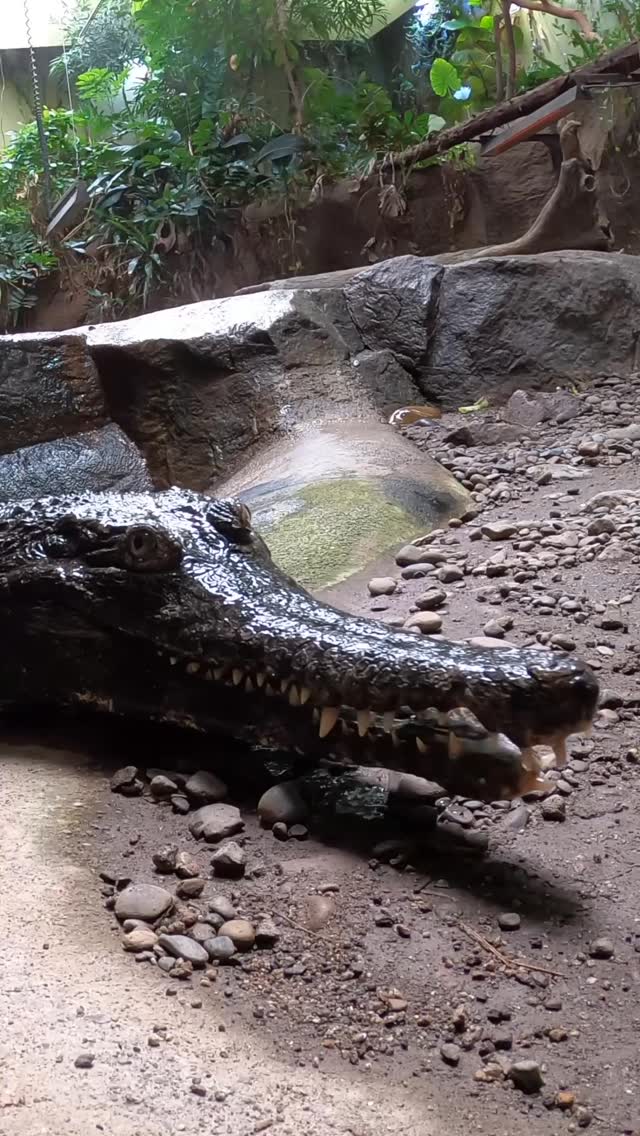- Understanding the habitat and lifecycle of the slender-snouted crocodile.
- The role of zoo management in providing enriching environments for crocodiles.
- Importance of dietary practices in the health of captive crocodiles.
- The significance of wildlife conservation efforts for crocodilian species.
- Engaging public interest through unique animal care practices and programs.
The slender-snouted crocodile is a remarkable species native to central and west Africa. Known for its elongated snout, this crocodile is highly adapted to hunting fish in riverine environments. In recent years, wildlife conservationists and zoological institutions have focused on understanding and preserving this species due to declining wild populations. The slender-snouted crocodile, often overshadowed by its more famous cousins, plays a critical role in its ecosystem by controlling fish populations and maintaining a balanced aquatic environment.
Creating an appropriate habitat for slender-snouted crocodiles in captivity is essential to replicate their natural behavior. Zoological experts design enclosures that mimic the moist, humid conditions of their native rainforest and river habitats. This involves maintaining the right balance of water bodies and land areas, complete with vegetation and structures that allow the crocodiles to bask, hide, and forage.
Zoo management teams put considerable effort into habitat enrichment to promote natural behaviors. An enriched environment can include varied terrains, logs, and water systems that help stimulate the crocodile’s senses. These features encourage activities such as climbing, swimming, and basking, which are crucial for their physical and mental well-being. The recent “croc walk” enjoyed by Morgan, the slender-snouted crocodile at a zoo, is an example of innovative practices that allow for exercise and exploration within a controlled setting.
A balanced diet is another cornerstone of animal care in zoological settings. For crocodiles, this means providing a diet that closely matches what they would consume in the wild. In Morgan’s case, fish represents not only a source of nutrition but also an opportunity to engage in natural hunting behaviors. Feeding strategies often involve introducing live fish or fish pieces into the habitat at different times and locations, encouraging the crocodile to utilize its instinctual hunting skills.
Conservation efforts are pivotal for the slender-snouted crocodile’s future. The International Union for Conservation of Nature (IUCN) lists them as vulnerable, with threats primarily from habitat destruction, poaching, and the illegal pet trade. Conservation programs in zoos are part of a broader strategy to safeguard this species. These programs include breeding initiatives, research on their biology and behavior, and education campaigns to raise awareness about their plight.
Zoos and aquariums play a crucial role in breeding slender-snouted crocodiles to ensure genetic diversity and potentially reintroduce individuals into the wild. Successful breeding programs require detailed knowledge of their breeding habits, incubation of eggs, and rearing of hatchlings. Research conducted in zoological settings contributes valuable data on growth rates, disease management, and overall health, which can inform conservation strategies in the wild.
Public engagement is vital in conservation work. Zoos use interactive and educational programs to connect visitors with animals like the slender-snouted crocodile. By observing feeding sessions and care routines, visitors gain insights into the species’ unique characteristics and the challenges they face. These programs often leverage social media platforms to reach a broader audience, sharing stories and videos that highlight animals’ personalities and promote conservation messages.
Crocodile care and conservation are multifaceted endeavors requiring collaboration among zoologists, conservationists, and the public. The slender-snouted crocodile is one of many species dependent on human intervention for its survival. Through dedicated habitat management, diet planning, and community involvement, zoos continue to be at the forefront of preserving these fascinating creatures for future generations.
The story of Morgan and her walks serves as a potent reminder of the importance of conservation. It showcases how proactive zoo management can contribute to animal welfare and education while sparking curiosity and concern for the natural world.
*****
Source Description
Croc walk
Slender-snouted crocodile Morgan enjoyed a walk around her habitat recently—and she stopped for some tasty fish along the way!


